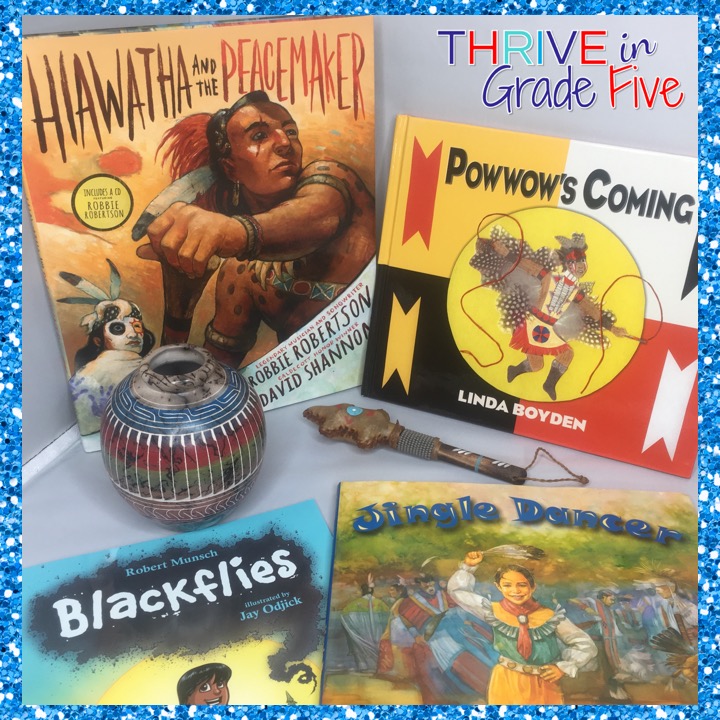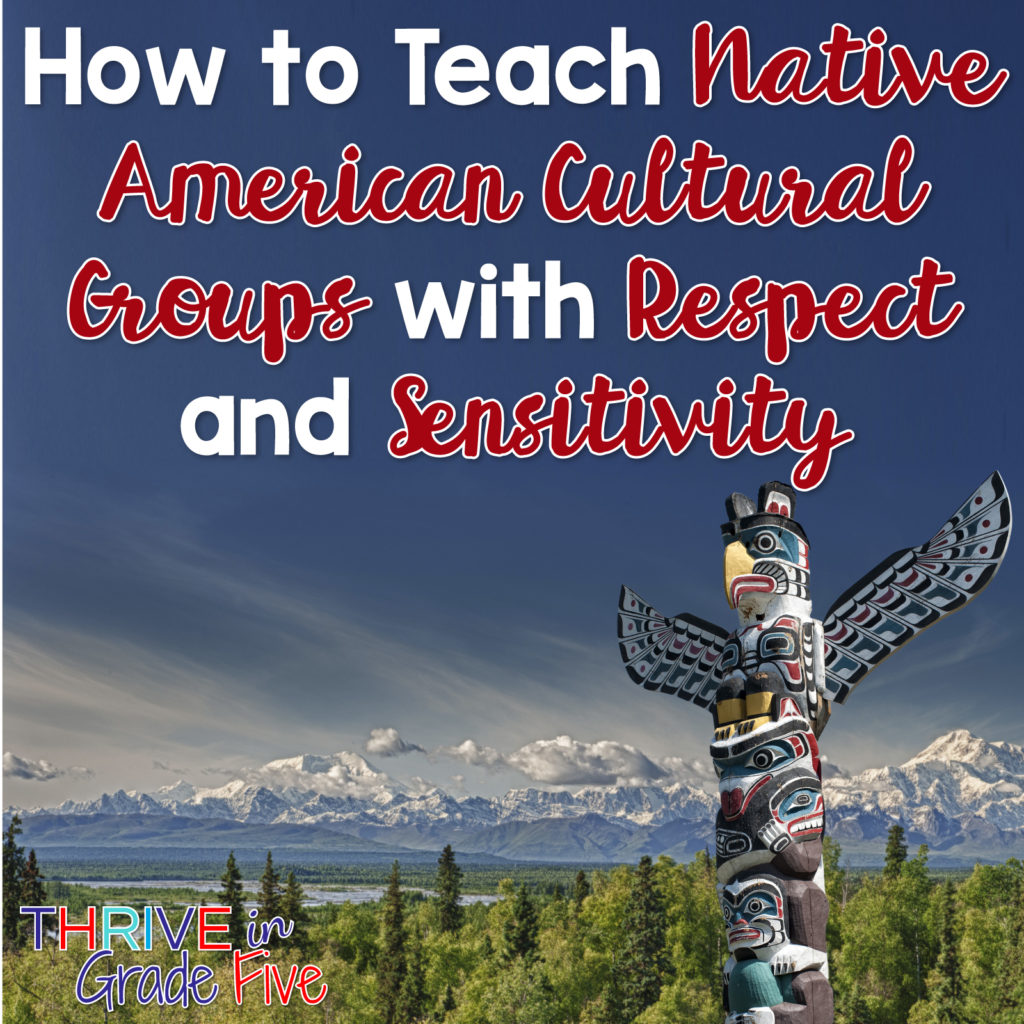I grew up mostly in Oklahoma and I’ve always lived around Native people and influences. My precious grandma told colorful stories of her family’s interactions with Native Americans in the early to mid 1900’s. Her family lived in rural Oklahoma and had multiple encounters with Native Americans, many of them negative. It was clear from her stories that there was no understanding between them.
Something I’ve noticed is that most states have standards requiring students to learn about Native Americans, both pre-contact cultures and modern citizens. However, there’s not much guidance for teachers on how to teach about Native Americans with sensitivity and respect.
I am not officially a part of any tribe or Native group. I want you to know that I’m writing this post using the knowledge and tips I’ve gained from working with Native students and adults, attending workshops, and my own research.
I believe that as teachers, we have a significant role in changing the dialogue and the language in our classrooms to ensure that people from all cultures, especially Native cultures, are treated with respect and dignity.
Please keep in mind that each cultural group has varying preferences in regard to language and treatment but there are some universal rules.
The following suggestions will help you to teach about Native American cultures respectfully and sensitively.
Understand that the land you now live on was stolen away from a Native group.
The land you are standing on right now used to belong to Native people and was taken from them illegally and/or unethically. Take the time to find out whose land you are living on. For example, I live in Oklahoma City, which used to belong to the Osage, Wichita, and the Comanche people.
This website will allow you to enter the name of your city or state and see the Indigenous groups that used to live on the land you occupy now. https://native-land.ca/
Reconsider any phrase that involves a negative view of Native people.
Don’t make insulting comments, like the low man on the totem pole, sit Indian-style, Indian giver, too many chiefs not enough Indians. These phrases are rude and we shouldn’t be using them. I will be the first to admit, I’m guilty of this too. I didn’t realize these phrases were disrespectful because I’d heard them all my life. Now that I know better, I do better.
Be careful when teaching the history of the United States.
Europeans weren’t able to take Native land because they were superior in battle or because they were skilled negotiators. No…they were able to take Native land easily because tribes were decimated by disease brought to the continent to which they had no immunity.
Don’t lump all Native cultures together.
There are currently more than 550 sovereign tribal nations who have federally-recognized relationships with the United States.
We need to emphasize that Native American groups were (and are still) unique with distinct language, beliefs, traditions, and dress. It is not appropriate to ask one Native individual to speak to the customs and preferences of a group to which he/she does not belong.
Use the present tense when talking about Native communities.
Many students don’t realize that Native people are still very much alive and deserve to be part of the conversation. When teaching about pre-Columbian or pre-contact cultures, be sure that students understand many of the tribes they are learning about have ancestors today who are still practicing their traditions.
Alison Black, the Director of Indian Education for a public school district in Oklahoma, says, “Tribal sovereignty is a huge issue. This is the perfect opportunity to speak about Indigenous people in a present tense.”
Do not encourage students to dress in Native American costumes.
I can look back to my elementary school days and remember many Halloweens and Land Run days during which children dressed up as Native Americans with feather headdresses and face paint. Sure, this was well-intentioned and not meant to cause anyone harm. However, the adults in our lives simply weren’t aware that this is offensive to many Native cultures. The colorful feather headwear, facepaint, and leather clothing are significant, sometimes sacred symbols to Native cultures. They shouldn’t be taken lightly by allowing non-Native children to play in them.
Do not single out Native children.
Do not call on Native children to speak on their cultures or share their experiences. They may be uncomfortable discussing their tribe’s rituals or they simply may not know enough about their cultures to share.
Give preference to books written by Native authors.
It is certainly preferable to read to your students from books written by Native Americans when teaching Native cultures or stories. Never use books that portray Native people as animals or that trivialize their importance. I read these amazing picture books to my class because they are written from a Native perspective:

Learn more about these amazing books here:
* Please note that Thrive in Grade Five (Jenifer Bazzit) is a participant in the Amazon Services LLC Associates Program, an affiliate advertising program designed to provide a means for sites to earn advertising fees by advertising and linking to amazon.com. *
If you’d like more information on this topic, I recommend the following site:
Smithsonian’s National Museum of the American Indian – Lessons and Resources








6 Comments
Jenifer,
Thank you for such a culturally sensitive and respectful blog post.
Thank you for your comment, Sharon!
Thank you in particular for the link to the map from native-land.ca
I am excited to also discover an actual cultural exhibit near me managed by a sovereign tribe.
I am a homeschool mom in MN trying to teach some accurate U.S. history.
Do you have any recommended literature for middle school level readers?
Thank you for taking the time to leave a comment, Charity! Are you looking for Native American-themed chapter books or just history chapter books in general? I am partial to Jane Yolen, Lois Lowry, and Ann Rinaldi for history-themed chapter books. These amazing ladies really do make history relatable to students. 🙂
Tnank you for your culturally sensitive points. I appreciate everything you said. I am a native american and agree with everything written.
Thank you for sharing this, Anne!